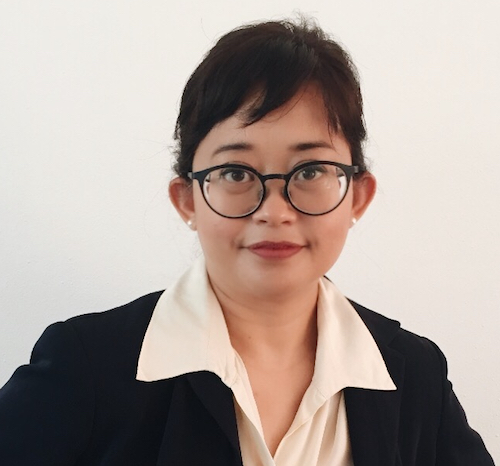Image may be NSFW.
Clik here to view.
Clik here to view.

All cities harbor terrible secrets. Between 1993 and 2009, Davao City witnessed a wave of shocking murders of young boys and teenagers from the slums. Some were as young as 14. Most were street children suspected of small time crime – petty thieves, pickpockets, glue sniffers and drug peddlers.
Scrappy record keeping resulted in varying numbers of killings. It is known that the first occurred in 1993. Two hundred children were killed between 1999 and 2003. They were killed in cold blood by motorcycle-riding assassins who were believed to be members of a mysterious vigilante group known as the Davao Death Squad (DDS).
The DDS reportedly had the official approval of the police, and local and national government. They were organized, operated in daylight and killed in plain sight, most frequently by brutal stabbing. Others were slain with multiple pistol shots. The prevailing attitude in Davao at the time, however, was not one of condemnation, outrage, and horror, as one might reasonably expect. Rather, people were pragmatic and tolerant. What had to be done, needed to be done, people said.
How was it possible that people thought this way?
In 2009, a study published in the legal journal Crime, Law and Social Change, offered an answer. The authors, Brenda Carina Oude Breuil and Ralph Rozema, at Utrecht University in the Netherlands, sought to understand the role of a collective social imagination in legitimizing the extrajudicial killings of children and young men by death squads in two comparable cities – Davao City in the Philippines, and Medellín in Colombia. They conducted ethnographic fieldwork, analyzed international and local newspaper reports, and reports by local NGOs. Their main point is that socially excluded groups had been dehumanized in the popular imagination and this rationalized, even justified, death squad killings.
The process, they argue, goes like this:
First, the city must have a long and recent history of violence and conflict. Survivors of this past are battle-weary and hardened, “desensitized” to conditions of extreme violence.
Second, it is imagined that only someone tough enough and willing to get their hands dirty to do whatever it takes to clean up the mess can bring about a safe and orderly city.
Third, certain groups in society are depicted as less than human, as undesirable blemishes. Considered as dirty, disorderly, and criminal, the urban poor become easy targets. A general and urgent feeling emerges that calls for society to be cleansed of scum.
Rodrigo Duterte was first elected mayor of Davao City in 1988 and held the post for most of the time until his election as president in 2016. In the midst of his terms, the city underwent a bloody purge. “I don’t mind us being called the ‘murder capital’ of the Philippines,” Duterte said. “As long as those being killed are the bad guys.... I’ve been telling criminals it’s a place where you die.... If that’s a cue for anybody, that’s fine.”
Carlos Conde, a fellow at the Philippine Center for Investigative Journalism, reported on the case of Clarita Alia, an impoverished vegetable vendor who was single-handedly raising 7 children. Unable to keep them off the streets, she lost 3 sons in 2001. Richard, aged 18, was accused of robbery; Christopher, 16, had spent time in jail for sniffing glue; and Bobby, 14, had just been released from jail after being suspected of petty theft. Her sons were all stabbed to death by the DDS. The killings were described as a “systematic and dramatic effort to eliminate the undesirables in society.”
At the time, Duterte’s right-hand man in the police force was Isidro Lapeña. He was chief of the Davao City police and head of the city's public safety command center, before retiring in 2007. He was in post for most of the carnage. From around 1995, child advocacy groups in Davao began to notice an alarming rise in the killings of children. The DDS operated with absolute impunity. By 2009, Human Rights Watch had found compelling evidence of complicity at all levels of government and among law enforcement agencies.
Businessmen applauded the killings then. “The criminals are being eliminated one by one,” noted Romeo J. Serra, the president of the city’s Chamber of Commerce and Industry. “I call it the process of expurgation,” said Edmundo Acaylar, the city’s tourism officer. “Whoever is doing it, I say very good and thank you.” In 2003, the Washington Post reported that President Gloria Macapagal Arroyo had personally selected Mayor Duterte to be her special adviser on peace and order. Davao was hailed as a successful model for fighting crime.
Davao City brims with sorrow, pain, passion, and pride. Long-term residents who lived through the troubled 1970s and 1980s – when communist insurgents, Islamic separatists, the armed forces, paramilitaries, and vigilantes turned the city into a hellhole – will readily tell you that the era of terror, bloodshed, and anarchy is over. One no longer lives in fear, they will say. Davaoeños credit Mayor Rodrigo Duterte for the change. Under his leadership, they claim, Davao City was put right. They believe that there is now order, peace, and prosperity.
The killings are Davao City’s open secret. “DDS, Davao Death Squad, I’ve heard of it but I know it doesn’t exist,” was Lapeña’s disingenuous denial in 2017. “I know the DDS do not exist.”
The killings were not and are not seen as murders. Davao City, people said, had undergone a vital social cleansing. It was cathartic, and necessary.
These attitudes are not confined to Davao. Since 2016, they have become prevalent across the nation. Davao’s tragedy has become the nation’s tragedy. – Rappler.com
Dr Rachel A.G. Reyes is a historian of Southeast Asia and columnist. She writes on science, gender, and politics. Her books include Love, Passion and Patriotism: Sexuality and the Philippine propaganda movement, 1882-1892 and Sexual Diversity in Asia, c.600 - 1950.
Image may be NSFW.Clik here to view.